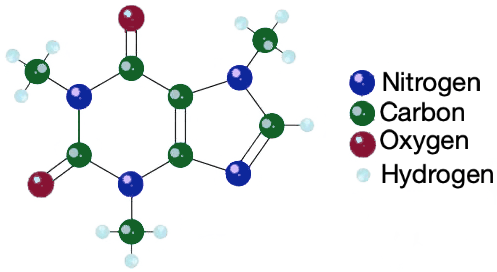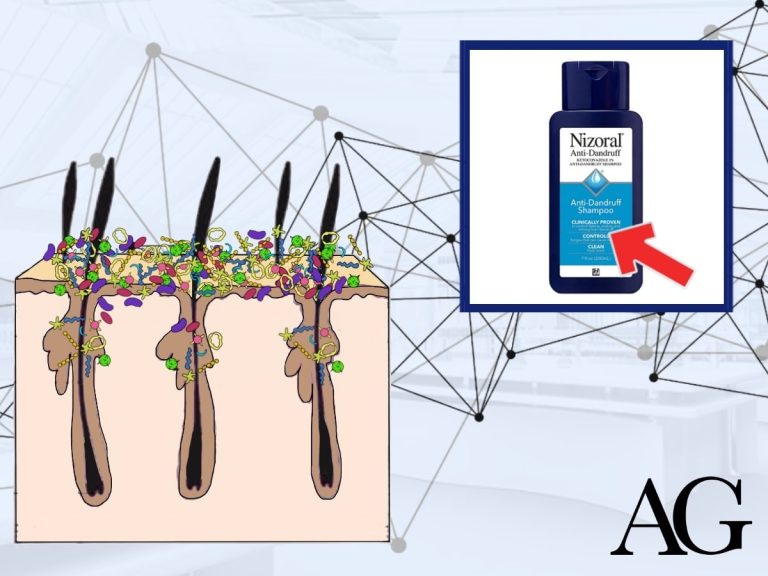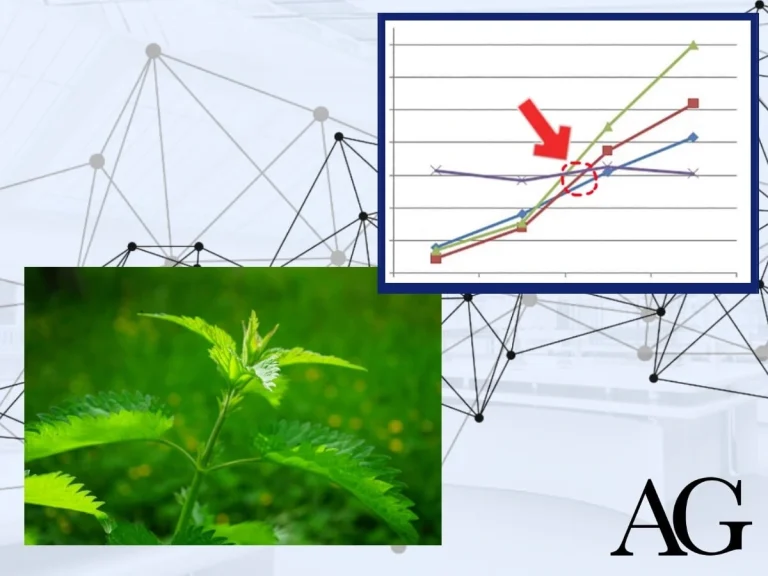With marketing slogans and phrases like “recharges your hair”, “stimulates your roots” and “helps hair feel stronger”, people desperate to stop their hair loss won’t hesitate to buy these caffeine-infused lotions while the retailers rake the cash in.
Caffeine shampoos and serums for hair loss are often marketed as powerful, natural hair loss solutions. And there is indeed data to support this claim. But beware of the context. Caffeine, under certain circumstances can also worsen hair loss.
This divide has led to a tribalistic conflict on online forums and reddit threads. People on one camp vouch for caffeine topicals as an effective hair loss remedy. On the other hand, others claim caffeine shampoos are complete bogus.
Here are two screenshots from a real thread on reddit.

As with all things, there is nuance to be accounted for and caveats to highlight. If used properly, caffeine can make a good addition to your arsenal of tools in your battle against hair loss. If used carelessly, caffeinated products marketed for hair loss could be a complete waste of time, money and hair.
In this article, we’ll answer questions like:
- How does caffeine affect hair growth?
- Do caffeine shampoos have the right caffeine concentration to make them effective?
- Are the benefits of caffeine shampoos so marginal that it’s comparable to cleaning a street with a toothbrush?
- Guidelines for caffeine usage to stop hair loss.
How does topical caffeine affect hair growth?
Caffeine is a stimulant commonly found in plants such as coffee beans, tea leaves, cocoa beans and more.

Caffeine affects the body in these ways:
1. Caffeine alters blood flow
Caffeine can have both vasodilation and vasoconstriction effects on different parts of the body.
In certain body tissues, caffeine causes blood vessel walls to relax and expand (vasodilation). This allows more blood to flow through the vessels.
Caffeine mainly achieves this vasodilatory effect by inhibiting phosphodiesterase (PDE). Phosphodiesterase typically breaks down cAMP (cyclic adenosine monophosphate). However, in the presence of caffeine, there is an accumulation of cAMP and vasodilation ensues.
We know that balding scalps have 2.6 times less blood flow1 and 40% less oxygenation2 than non-balding scalps. Although blood flow reduction is both a cause and a consequence of hair loss, we can see how caffeine, by allowing more blood to reach and nourish the hair follicle, might improve hair growth.
On the other hand, in different body tissues, caffeine’s adenosine-receptor blocking property can lead to vasoconstriction. Luckily, microcirculation around the hair follicles experience a vasodilatory effect. In this regard caffeine is good for hair growth.
2. Increases Insulin-like Growth Factor 1 (IGF-1)
IGF-1 is a hormone that plays a key role in numerous bodily functions. In the context of hair growth, IGF-1 helps regulate hair follicle cell proliferation, the hair cycle as well as follicular differentiation3.
Simply put, IGF-1 signalling is an important regulator in hair follicle biology.
In healthy, hair-bearing scalps, the dermal papilla secretes IGF-1 for the reasons just mentioned. IGF-1 is regulated by androgens. Not surprisingly, in scalps with androgenic alopecia (pattern baldness), dermal papillae cells “secrete significantly less IGF-1 than their counterparts from non-balding scalp follicles”4.
Note that PDE suppresses IGF-1. By inhibiting PDE, caffeine therefore indirectly stimulates IGF-1.
It stands to reason that raising IGF-1 levels back to baseline in balding scalps is probably a good thing. This will help maintain healthy hair growth.
A study concluded that “the topical application of 0.1% caffeine did not induce skin or hair follicle cytotoxicity and stimulated the expression of IGF‐1 in the proximal hair follicle outter root sheath.”
3. Caffeine protects against UV damage to the hair follicle
This study shows that excessive solar UVA and UVB radiation can negatively impact hair follicle functions. This includes decreasing keratinocyte proliferation, decreasing IGF-1, inducing early catagen phase and causing perifollicular mast cell degranulation.
The same study concludes that topical application of 0.1% caffeine protects hair follicles and alleviates UV‐mediated hair follicle cytotoxicity and dystrophy, keratinocyte apoptosis (cell death) and increased expression of TGF‐β2 in the proximal outer root sheath.
Caffeine can also protect the stem cell bulge, thereby extending a hair follicles ability to keep producing strong and healthy strands of hair. Inflammation (balding scalps usually have chronic low-grade inflammation) can cause faster stem cell depletion.
In other words. Caffeine helps protect the hair follicle.
4. Caffeine down regulates testosterone induced TGF-β1
TGF-β1 (Transforming Growth Factor beta 1) is a protein responsible for creating scar tissue. We know that in pattern baldness, scar tissue around hair follicles often develops alongside the progression on pattern baldness. This is because balding scalps usually have chronic low-grade inflammation, and TGF-β1 can help alleviate inflammation (at the cost of hair).
By down-regulating the TGF-β1 secreted by the cells in the dermal papilla cell cluster, caffeine can help slow down hair loss.
As a side note, the interplay between TGF-β1 and hair loss is discussed in more depth in our free book. Make sure to get yourself a copy.
So far, it seems as though topical caffeine is a home run for hair loss. After all, topical caffeine can:
- Prolong the anagen phase of the hair cycle
- Stimulate matrix keratinocyte proliferation (hair shaft growth)
- Increase IGF-1 thereby maintaining healthy hair function
- Promote blood flow
- Protect against cell damage (caused by factors like UV)
So why isn’t everyone and their dog using topical caffeine?
How does oral caffeine affect hair?
Millions of people with full heads of thick hair love caffeinated drinks. It is absolutely not my intention to dissuade you from enjoying your morning coffee. However, for completeness, here are some ways oral caffeine *could* be impacting your hair. If you are have hypothyroidism, insulin resistance or hyperglycaemia and are balding, this section may be noteworthy to you.
Cortisol and thyroid function
Pharmaceutical drugs like levothyroxine can help improve hair loss caused by poor thyroid function. On the flip side, oral caffeine (i.e. drinking lots of caffeinated drinks – not the shampoo formulations) can increase cortisol levels (the main stress hormone).
When cortisol is chronically elevated:
- Thyroid function can decrease, leading to hypothyroidism.
- The hair cycle may be disrupted due to cortisol induced skin degradation around the hair follicle7.
The link between oral caffeine and hair loss is weak at best. That said, if you are already hypothyroid, you may want to slow down your caffeine consumption.
Insulin resistance
Topical caffeine application is very unlikely to result in insulin resistance. However, excessive oral consumption of highly-caffeinated drinks (energy drinks often have high doses of caffeine) can result in a 15% decrease in insulin sensitivity in adults8. This is likely to be a result of elevated plasma epinephrine levels.
Insulin resistance can lead to a wide range of health issues, including an imbalance in levels of adipokines, which can be involved in androgenic alopecia9. However, there is very little evidence to suggest that drinking lots of caffeine will encourage hair loss.
What caffeine shampoo retailers won’t tell you
Prevalence of in-vitro tests
Most caffeine shampoo retailers will often cite this study conducted in Germany on 2007. And for good reason, the study found that exposing thinning hair follicles to caffeine resulted in elongated hair shafts.
Exposing miniaturising hair follicles to caffeine helps combat pattern baldness!
However, context matters. This study (as well as most other caffeine studies I’ve come across) was conducted ‘in vitro’. In other words, this was a petri dish study, not a clinical trial measuring hair counts on people’s real heads.
Making conclusive judgements about caffeine for hair loss from an in vitro study is like judging a car’s performance based solely on its engine test on a stand, without ever taking it for a drive.
In vitro experiments provide important insights. But they do not account for the complexities of the whirlwind of real-world interactions between thousands of variables that are impossible to account for in a petri dish.
I could dump petroleum onto cancer cells on a petri dish and watch the cancer cells die. Would then saying “petroleum kills cancer, lets all eat petroleum” make much sense?
In vitro studies (petri dish studies) do not always translate into in vivo (real-life).
Conflict of interest
Industry-funded clinical trials will often choose to measure the trial’s efficacy with somewhat arbitrary measurements such as patient satisfaction scores, anagen to telogen ratios or hairs shedded in ‘tug tests’. Of course, there is value in these measurements, its just that they are much more easy to manipulate compared to hair shaft diameter measurements and hair counts.
A patient can be manipulated and gaslighted to feel like they have experienced great results. Likewise, anagen:telogen hair ratios can be manipulated by aligning the clinical trial with seasonal based sheds.
It’s pretty clear that topical caffeine can help protect you against hair loss – I’m just not convinced that it is a miracle cure.
Caffeine has rarely been studied on its own
It’s hard to tell just how effective caffeine is at regrowing hair when most of the time it is studied alongside other hair loss interventions like minoxidil or azelaic acid.
Topical caffeine vs shampoo caffeine.
Alpecin was banned from claiming that their caffeine shampoo could stop hair loss by the Advertising Standards Authority (ASA). The ASA said “We considered that we had not seen any studies of the actual product as used by consumers on their scalp using an accurate and objective analysis of hair growth, in a well-designed and well-conducted trial”10.
The topical lotions that stay on the scalp for hours are not the same as a shampoo that is washed off 1 or 2 minutes after application. These things matter. And these things are often brushed under the carpet.
Maximise effects of topical caffeine
In order to maximise the efficacy of caffeine usage for hair growth, you may want to consider the following:
- Type of caffeine: It goes without saying that in terms of hair growth, topical caffeine (I.e. caffeine lotions, foams or shampoos applied directly on the scalp) are infinitely superior to oral caffeine.
- Type of topical: This study found that caffeine solutions can penetrate the hair follicle after 2 minutes however penetration is maximised if left in for hours. Leave-on solutions might be better than shampoos which are quickly washed off.
- Frequency: If using a leave-on solution, this study found favourable results applying the solution twice daily. If using a shampoo, I would use it as often as you would typically use a shampoo.
- Concentration: 0.2% for leave-on lotions and 1% concentrations for shampoos seem to work.
- Combination treatment: Don’t use caffeine as your only tool against hair loss. Studies show that combining caffeine with minoxidil or azelaic acid can improve its effects. Personally, I would consider other interventions such as microneedling or scalp massages.
Clinical trial data
| Study | Study Conclusions | Notes and take-aways |
| This 2017 study compared 0.2% caffeine topical (Alpecin Liquid) against 5% minoxidil in people with androgenic alopecia | At 6 months, the group of the 5% minoxidil solution showed a mean improvement in anagen ratio of the trichogram of 11.68%, and the group of the 0.2% caffeine solution had an anagen improvement of 10.59%. | 0.2% of 2mL caffeine topical applied twice daily has similar effects to 5% of 1mL minoxidil twice daily. Conclusions drawn form anagen ratio changes, not hair counts or hair diameter changes. |
| Another study compared a solution containing 1% caffeine, 5% minoxidil, and 1.5% azelaic acid to 5% minoxidil alone. | The topical containing caffeine, minoxidil and azelaic acid improved hair growth more than 5% minoxidil alone. | Caffeine + minoxidil +azelaic acid is superior to minoxidil alone. |
| Another study compared a topical solution containing both caffeine and 2.5% minoxidil to 2.5% minoxidil alone in 60 patients with AGA. | After 120 days of treatment, the combined solution was more effective than MXD alone, | Caffeine + minoxidil is superior to minoxidil alone. Unfortunately, we don’t know the caffeine concentration used. |
| This study compared shampoo containing caffeine to a non-caffeinated shampoo for hair loss | After 6 months, the caffeine shampoo proved to be superior to the placebo. | No concentration data available but it looks like caffeine is a good ingredient to have in a shampoo. |
A summary of caffeine for hair loss
The case for caffeine topicals and shampoos
Considering the lack of side effects, relatively cheap cost and positive studies conducted on caffeine topicals, caffeine topicals may be a good intervention to try for pattern baldness. After all, there is little to lose.
This cannot be said for all hair loss interventions. For instance, when starting minoxidil, there is always the possibility of of experiencing an increase in prolactin or lower blood pressure in some people.
The case against caffeine topicals and shampoos
While caffeine certainly has some hair promoting effects, it feels like it’s more of a band aid rather than a robust solution to hair loss and is unlikely to result in any miraculous hair growth.
Consider this as a way to slow down hair loss rather than for hair loss reversal
Bear in mind, we are all biochemically unique, it is possible that caffeine might produce better results in some people while produce underwhelming results in others. It doesn’t mean that caffeine ‘simply doesn’t work’, it just doesn’t work for everyone.


